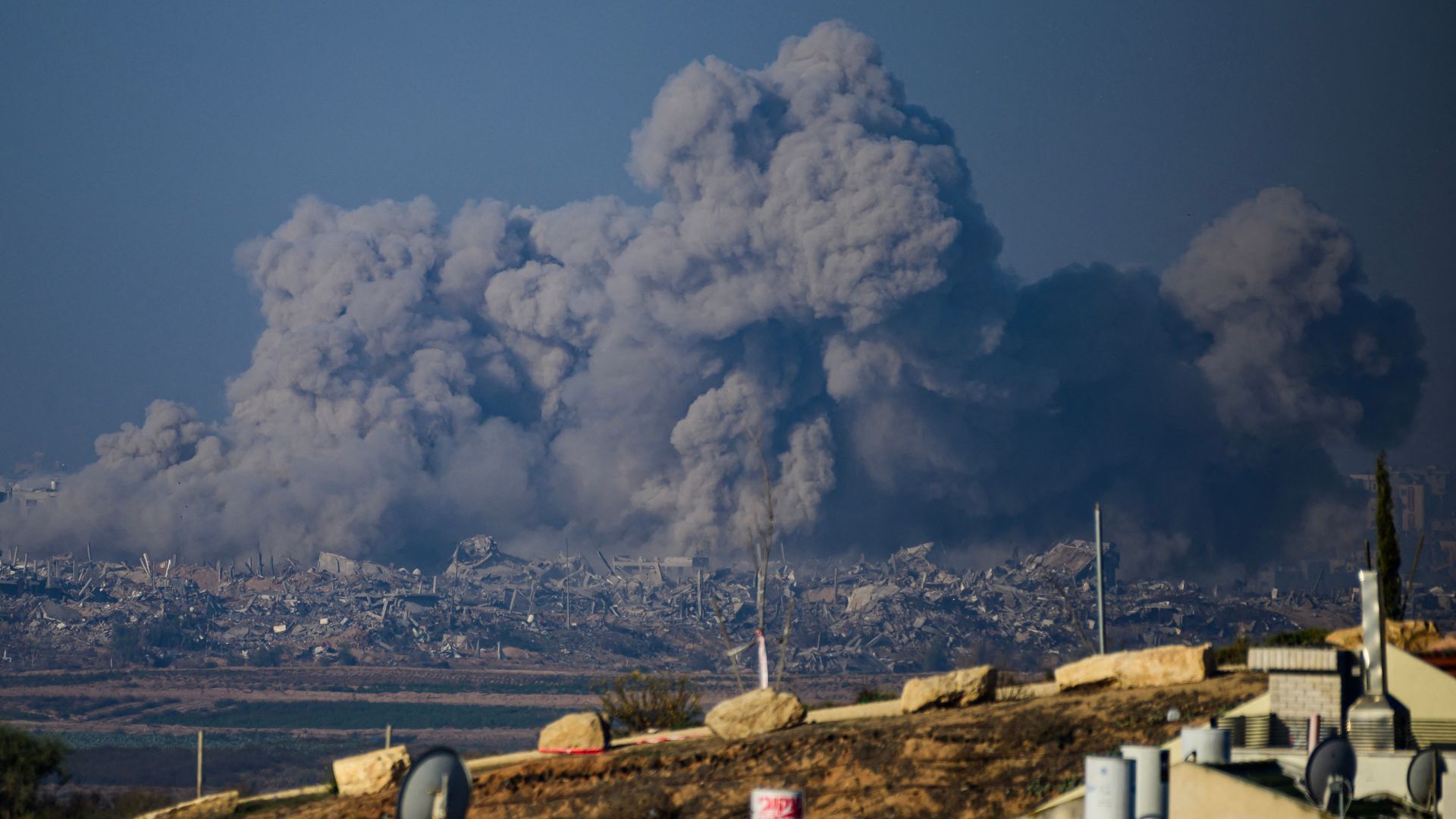Israel has resumed air raids in Gaza after a seven-day pause in fighting. Here is what we know so far:
How did the Israel-Hamas truce end?
The Israel-Hamas truce began on November 24 and was renewed twice before ending on Friday. Under the truce, fighting was paused and humanitarian aid was allowed to enter Gaza as Hamas released captives in exchange for Israel releasing Palestinian prisoners.
The UN humanitarian office, OCHA, reported that despite the pause in fighting, Israeli forces shot at Palestinians in Gaza on November 29, killing two people. They also shelled people on November 30.
Earlier on Friday, Al Jazeera’s Tareq Abu Azzoum reported from Khan Younis in Southern Gaza that Palestinians were anxiously hoping that the truce would be extended to allow for more humanitarian aid into the enclave.
An hour before the truce was supposed to end, at 7am (05:00 GMT), the Israeli military announced that its Iron Dome missile defence system had detected incoming rockets. After that, they “intercepted a launch from Gaza”.
“We have seen rockets being fired from Gaza before that have been intercepted by the Iron Dome that Hamas later said were simply a misfire,” reported Al Jazeera’s Imran Khan from East Jerusalem. “Or it could be a message to try and put some pressure on the Israelis to try and extend this ceasefire”.
Hamas did not immediately respond or claim responsibility for the launches.
Did Israel resume air raids in Gaza?
The deadline for the extended truce passed with no announcement of an extension from either side. Minutes after, Israeli air raids and artillery fighting resumed in Gaza and witnesses in the enclave reported heavy clashes between Israeli forces and Palestinian fighting groups.
The Israeli military announced on X, that the fighting is now resuming because “Hamas violated the operational pause” and “fired towards Israeli territory”.
Where in Gaza has fighting resumed?
On-ground clashes between Israel and Hamas have resumed in separate areas across the territory, reported Azzoum. At least 54 people have been killed since Israel’s army resumed its attacks, according to Gaza’s health ministry.
Two people have been killed in Beit Lahia in the north of the Gaza Strip.
There is heavy shelling in eastern Khan Younis in southern Gaza. Israel dropped leaflets asking people in Khan Younis to move further south towards Rafah on the border with Egypt.
One casualty has been reported in Khan Younis city while two have been killed in Hamad town, south of Khan Younis.
On Friday, a building in northern Gaza’s Jabalia refugee camp was completely destroyed. There are reports that a house has also been destroyed in Rafah in the south of Gaza.
Israel is also shelling near Nuseirat and Bureij refugee camps in central Gaza. Also in central Gaza, 10 people have been killed and a number of civilians have been wounded in the Maghazi area.
Due to Israeli bombardment and clashes that began after the October 7 Hamas attack, about 60 percent of homes in Gaza have been destroyed, reported Gaza’s government media office. At least 50,000 families and their extended families are now homeless and about 250,000 housing units have been partially destroyed. More than 15,000 people in Gaza, including at least 6,150 children, have died, according to Palestinian health authorities.
Could the US have stopped the resumption of fighting?
During his third visit to Israel since the escalation of violence, US Secretary of State Antony Blinken told Israeli Prime Minister Benjamin Netanyahu on Thursday that Israel cannot repeat in southern Gaza the massive civilian casualties and displacement of residents it has inflicted in the north.
Yet, there is no evidence that Israel is limiting the war.
Spokesperson for Iran’s foreign ninistry, Nasser Kanaani, posted on X that “the political and legal responsibility for the continuation of the aggression and massacre” rests with Israel, the United States and “a few governments that support this apartheid regime”.
Yossi Mekelberg, an associate fellow at Chatham House, told Al Jazeera that the US has enough leverage to stop the fighting and influence other countries to change the course of the war.
Vice chairman of the executive council of Lebanese armed group Hezbollah, Ali Damoush, says that Israel resumed its aggression on Gaza by a US decision. He called the US a decision-maker in this war, adding, “This war from the beginning has been America’s war against the Palestinian people,” on Telegram.
Where has Hamas attacked?
Hamas’s armed wing, the Qassam Brigades, announced on Telegram that it attacked the cities of Ashkelon, Sderot and Beersheba in southern Israel with rocket barrages. The group said the attacks were “in response to the targeting of civilians”.
What about captives and Palestinian prisoners ?
Nearly 240 captives were taken by Hamas following the attack on October 7. Of them, 127 captives remain in Gaza, with 110 freed as part of the truce.
Israel initially released a list of 300 Palestinian prisoners eligible for release during the pause in fighting. A list of 50 more names of prisoners eligible was released later. Of the 350 prisoners, 240 have been released and 110 remain. However, at the same time, Israel has arrested about the same number of Palestinians in the West Bank and East Jerusalem.
What next?
Israeli Prime Minister Benjamin Netanyahu’s office said that with the resumption of fighting, Israel was committed to achieving its targets in the war.
The Ministry of Foreign Affairs of Qatar released a statement on Friday, expressing “deep regret at the resumption of the Israeli aggression against Gaza”. The statement added that negotiations between Hamas and Israel are continuing “with the aim of returning to a state of the pause”. Qatar has been central to mediation efforts between Israel and Hamas.
Israel’s participation in the 28th UN Climate Change Conference (COP28) which started on Thursday in Dubai amid the continuing war, was also criticised by some.

